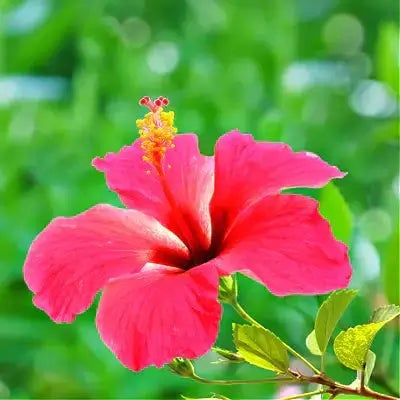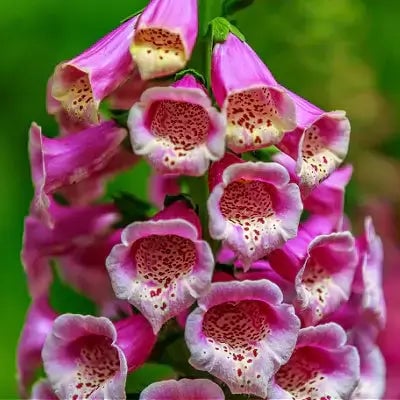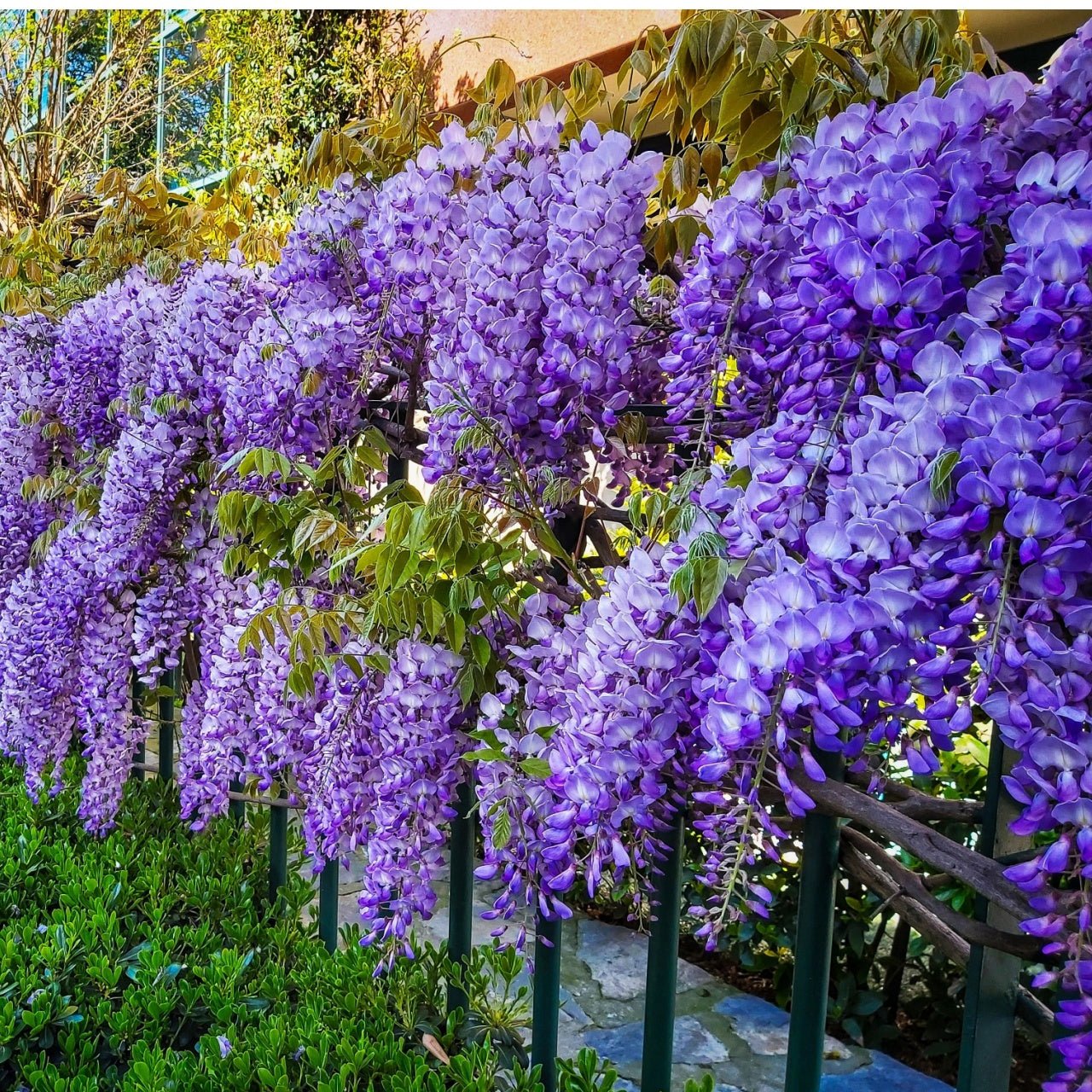Although you may use your garden as a relaxing sanctuary, there may be danger lurking in its allure, especially in the case of younger children and your family pets. Some beautiful plants you cherish for their beauty can easily be disguised as toxic killers if ingested within minutes, whether they're consumed accidentally or out of curiosity. Here are some common types to be aware of, states Tammy Sons from Tn Nursery.
Foxglove
Foxglove is a mysterious-looking plant that can grow as high as 3 feet tall with drooping white, pink, or purple flowers along the central stalk that sometimes has dots inside. Digitalis purpurea is its Latin name, which may sound a bit familiar to you since the plant's leaves are a financial resource of the heart drug Digitalis. If any part of the foxglove is consumed, you'll likely suffer an episode of nausea, cramps, diarrhea, and mouth pain.
Wisteria
Wisterias create dreamy sweetpea-like flower cascades with vibrant pink, blue, or white colors from vines that mainly grow in the South. The whole plant is considered toxic. Eating this plant will induce nausea, vomiting, diarrhea, and cramps that may require treatments such as anti-nausea pills or intravenous hydration.
Rhododendron
Both rhododendrons and azalea bushes, with their attractive bell-shaped flowers, look beautiful in the springtime. However, their leaves are pretty toxic, and the honey is derived from the flower's nectar. Consuming these evergreen shrubs will burn your mouth along with increased salivation, a tingling sensation in your skin, diarrhea, and vomiting. Dim vision, weak muscles, and headaches will likely follow. Also, your heart rate may beat strangely or slow down. In some cases, you could even slip into a coma and experience a fatal convulsion.
Hydrangea
This pretty flowery bush is a typical yard ornament that can reach heights of 15 feet high with greenish-white, deep blue, or rose-colored flowers that form large clusters and look as safe to eat as cotton candy to a small child or pet. However, those enticing blooms will cause a stomach ache that can develop hours after consumption.
Oleander
Every square inch of the entire oleander is toxic, different from other plants that may only have poisonous sap or flowers. Even accidentally inhaling the smoke from burning oleander is toxic. Other issues may arise from using them as marshmallow roasting sticks or drinking the water where the clusters of white, pink, or red flowers were placed. Usually, the symptoms include an abnormal heart rate, whether it's palpitations or slowing down.
Lily-of-the-valley
These lovely drooping flowers also referred to as mayflowers, are 100 percent toxic, from the very end of their small bell-shaped flowers that demurely fall away like parted hair to the water where they're placed. Ingesting just a bit of the bulb will likely be okay. But, if a great deal is consumed, be ready for nausea, vomiting, abdominal pain, cramps, diarrhea, and mouth pain. It's also likely that your heart rate will become irregular or slow down.
Chrysanthemum
Frequently called mums, these attractive flowers' yellow and orange varieties are showcased in the fall around Halloween and Thanksgiving on the front steps of people's homes. There are around 200 species of mums, and although they typically grow relatively close to the ground, they can turn into shrubs. Gardeners often plant mums to deter rabbits, and the flower heads can be somewhat toxic to humans. Touching them can potentially make your skin inflamed or itch.
Although extreme cases of plant poisoning are rare, be mindful that some domestic garden plant varieties can potentially present a hazard, leading to allergies or skin reactions.
Safely Separating and Utilizing Toxic Plants Without Harming Nearby Vegetation
Gardener professionals and agricultural specialists face specific difficulties and benefits when working with toxic plant species. Their natural defense mechanisms can become hazardous to nearby plants and animals if toxic plants are improperly managed. The beneficial properties of these plants exist as potentially valuable compounds that allow for advantageous applications when proper management practices are applied. The following approaches explain how to handle toxic plants by separating them from other vegetation and potentially using them while protecting surrounding plant life.
First and foremost, isolation is key. To keep toxic plants from affecting other vegetation, you should plant them in specific plots distinct from different growing areas. Separate planting zones prevent toxic plants from spreading through root systems below ground or seed dispersal, possibly overtaking surrounding plant life. Raised beds and lined trenches are physical barriers to establishing a controlled growing environment. This approach succeeds in trapping harmful substances emitted by plants into the soil while stopping these substances from traveling to regions with non-toxic plant species. These barriers will effectively reduce the likelihood of roots penetrating through, preventing chemicals from leaking out that could harm nearby plants.
Container planting stands as an essential practice for managing plant growth. Large pots or planters enable the safe cultivation of toxic species on patios, balconies, and other specified areas. Contained environments allow precise tracking of soil conditions alongside plant development. Containers stop root spread because they block root access to the surrounding soil. Containers provide the flexibility to shift plants when reorganizing space or isolating toxic specimens from other vegetation. Growing toxic plants in containers creates an easier way to manage pruning debris and leaf litter so that toxins do not reach the compost pile or spread into garden beds.
The third measure requires careful pruning along with responsible disposal methods. Always wear protective gear when you remove leaves, stems, or seed pods from toxic plants. Proper debris removal reduces toxin transfer to soil and plant surfaces. A designated composting system or separate waste bin for toxic plant material offers significant advantages. Traditional composting methods may not be appropriate because plant toxins could stay active and pollute the final compost product. Advanced composting systems that operate at high temperatures may be effective at breaking down toxic plant material but should only be used after confirming through research that high temperatures will neutralize the toxins. The safest disposal method may involve placing it in a secure landfill or following local disposal guidelines.
Many possibilities for using toxic plants become available once you practice safety measures. Certain toxic plants generate useful substances gardeners can use for organic pest management. Plants produce defensive toxins against insects and animals that scientists can harvest or extract to make organic repellents. These natural compounds repel specific pests but avoid synthetic chemicals' broad-spectrum side effects, requiring strict regulation and thorough research. Improper extraction methods and excessive concentrations of plant-based toxins can cause harm to non-target organisms and create potential dangers for human health.
Certain toxic plants can be transformed into dyes and fibers or be arranged into decorative displays. Personnel working with these materials must wear personal protective equipment and verify that hazardous residues are absent from final products. Although dried flowers or seed pods from toxic species provide distinct aesthetic value in ornamental settings, they must be displayed where children and pets cannot reach them. People can suffer harm through indirect contact with toxic materials when they are not aware of the inherent dangers.
Some toxic plants store active chemicals as valuable medical research and therapy development tools. These chemicals sometimes reveal new disease treatment approaches or become the foundation for therapeutic developments. These activities require strict laboratory or expert supervision. Performing extractions without supervision creates serious health dangers and puts at risk anyone who accidentally encounters the substances.
Finally, effective signage and education are crucial. Designating toxic plant zones with clear signs helps visitors, workers, and neighbors recognize areas where caution is necessary. Shared gardening spaces like community gardens or allotments require visible instructions about toxic plant management. Educating people about proper growing and harvesting methods for these plants ensures safety and prevents incorrect knowledge.
Protecting your garden's biodiversity and health requires essential separation practices between toxic plants and other vegetation. Effective management of these species requires dedicated plots and container cultivation, rigorous disposal methods, and careful investigation of possible applications such as pest control and research. Responsible handling of toxic plants transforms potential garden threats into fascinating elements that enhance cultivated spaces when appropriate safety measures are followed.
Read more

Tennessee Wholesale Nursery anf The Washington MonumentWith a growing emphasis on protecting the environment, it is essential for everyone in the tree, plant, and arboretum industry to do their par...

Growing and nurturing beautiful Hawaiian flowers will take some extra care, and they will need to grow in a suitable climate for these fabulous flowers. There are several exotic flowers to choose f...



